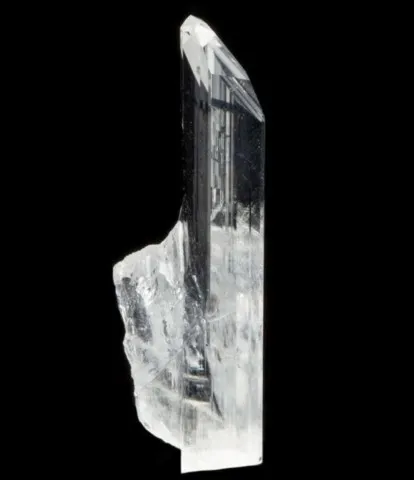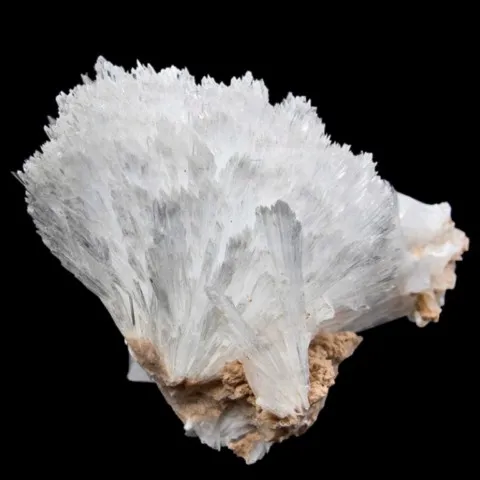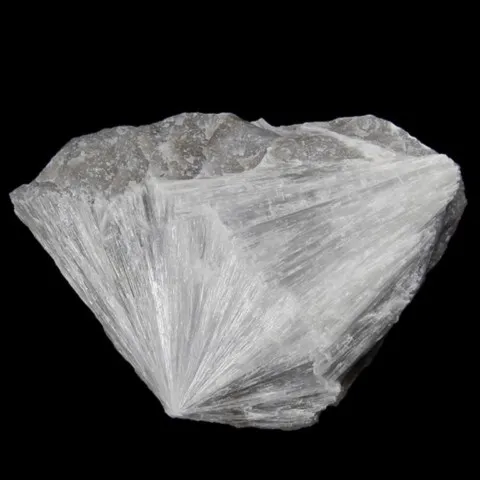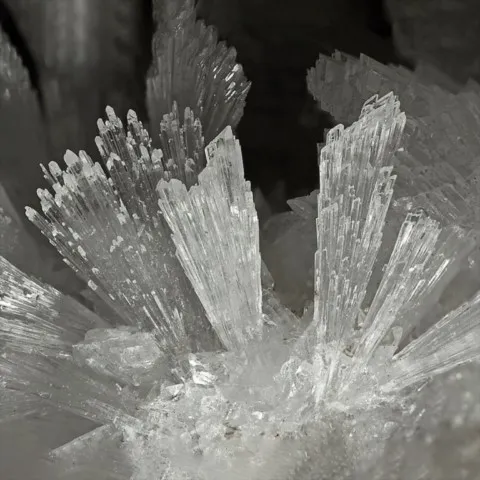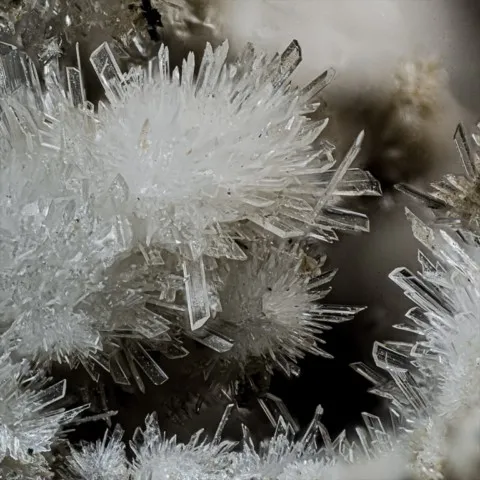HYDROBORACITE
Class : Carbonates, nitrates, borates
Subclass : Borates
Crystal system : Monoclinic
Chemistry : CaMgB6O8(OH)6 3H2O
Rarity : Uncommon
Hydroboracite is a mineral typical of salt deposits resulting from the evaporation of salt lakes. It is the classic companion of colemanite, ulexite and priceite. Its name refers to its chemical composition : from the Greek hudôr (water) and its formerly supposed analogy with boracite. Hydroboracite is white in color, rarely brownish or greenish, and constitutes concretionary masses with a fibroradiated texture or elongated lamellar crystals. The resemblance with certain aragonites or fibrous gypsums can be strong. It is a secondary boron ore.
Main photo : 3.5 cm hydroboracite from Kohnstein Quarry, Niedersachswerfen, Germany © Rob Lavinsky
Hydroboracite in the World
Twinning
No twin known for this mineral species.
Fakes and treatments
No fakes recorded for this mineral species.
Hardness : 2 to 3
Density : 2.15 to 2.17
Fracture : Undetermined
Streak : White
TP : Translucent to transparent
RI : 1.520 to 1.571
Birefringence : 0.049
Optical character : Biaxial -
Pleochroism : None
Fluorescence : None
Solubility : Acids
Magnetism : NoneRadioactivity : None

